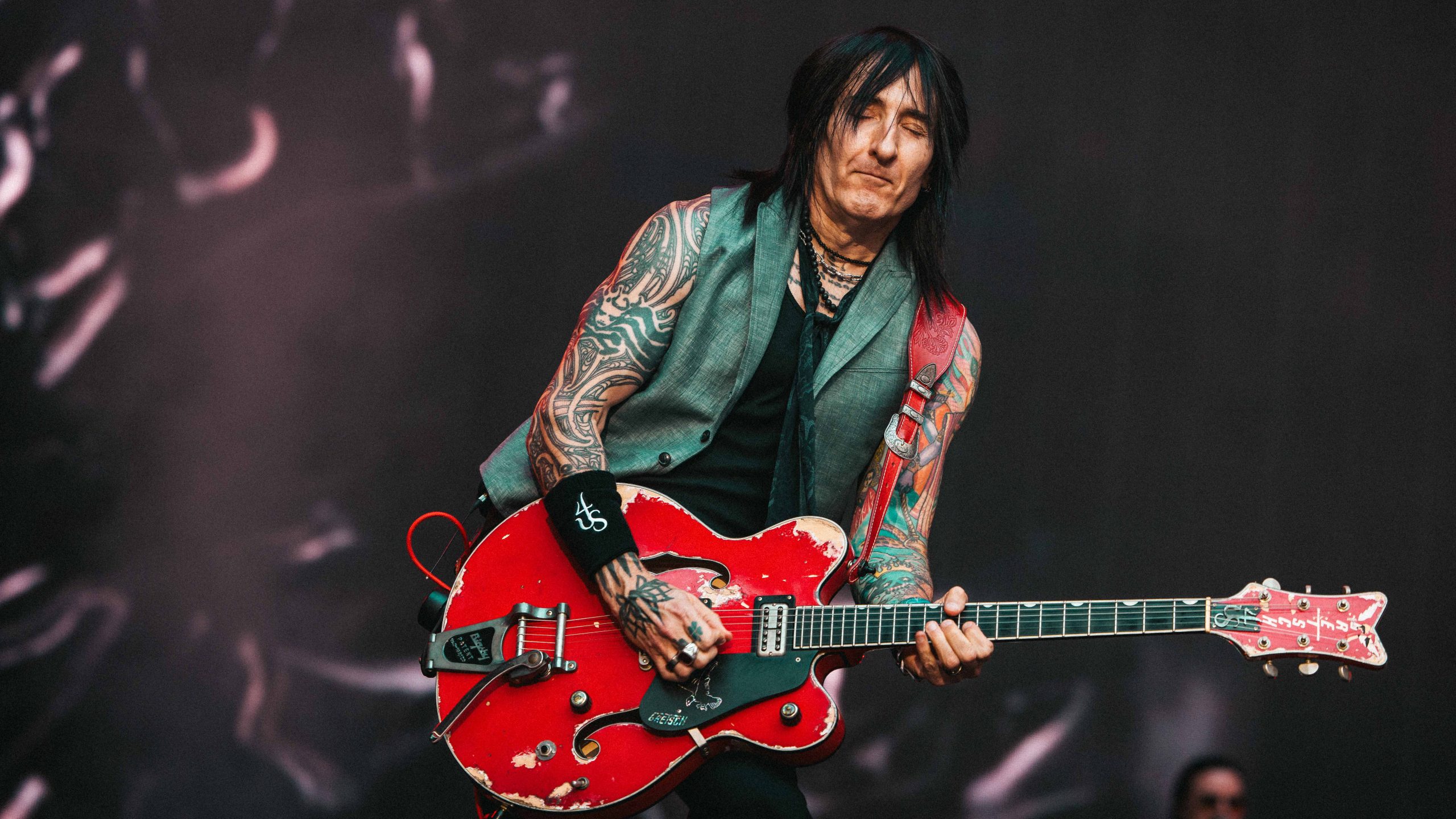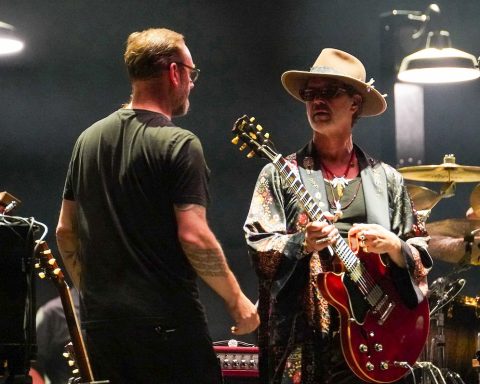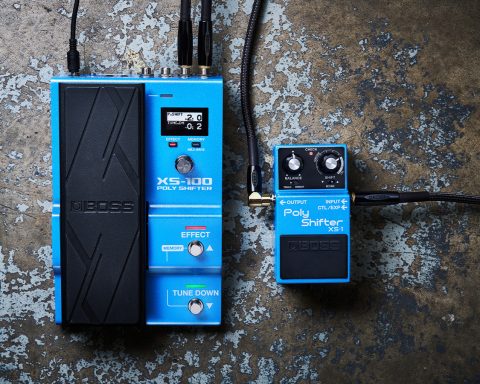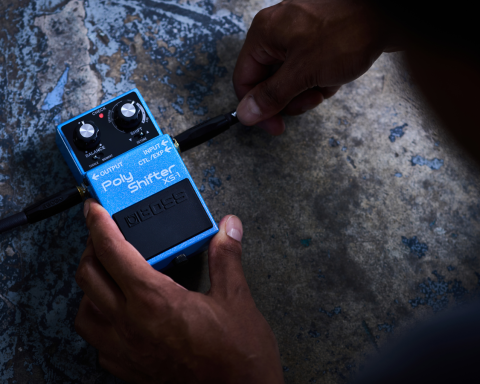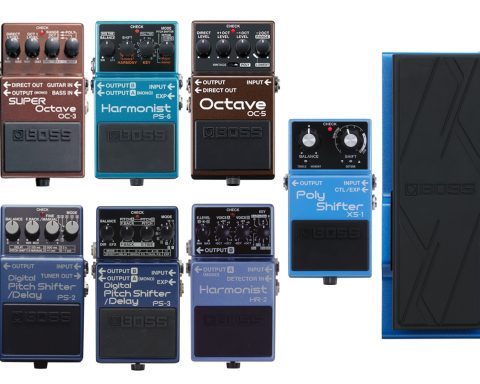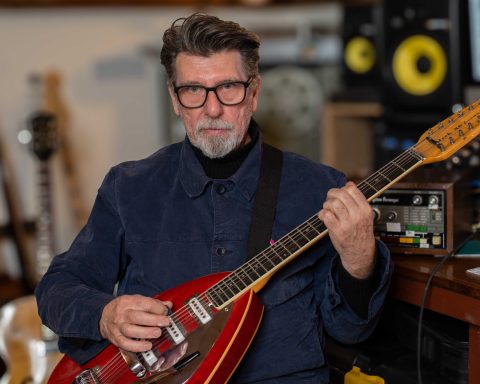Wembley Arena is humming in anticipation as Guns N’ Roses prepares to storm the stage. It’s a balmy Summer’s evening in the nation’s capital, and Rival Sons have cranked up the heat in support. Imminently, the city that Slash claims as his birthplace and remains home to many of the band’s musical heroes will be treated to a non-stop hard rock rollercoaster.
Much like it set the scene to Guns N’ Roses’ chart-topping 1987 debut album, Appetite for Destruction, “Welcome to the Jungle” kicks off the band’s dynamic triple-hour set. Equal parts menace and groove, this anthem of dark celebrations rises and explodes like sonic fireworks in the charged evening air.
“You know where you are?!”
Wembley Arena, Summer 2025, witnessing the tour dubbed Because What You Want & What You Get Are Two Completely Different Things.
Earlier this afternoon, post-soundcheck, BOSS took some time to catch up with guitarist Richard Fortus. A bona fide Guns N’ Roses veteran, the St. Louisan joined the ranks in 2002, while Axl Rose cited him as “the guy that we always were looking for.”
Twenty-three years later, he’s still the guy: jaw-droppingly talented and with an ear for great tone, this six-string slinger sure knows his craft.
Guns have kept Fortus more than busy in recent years, though his career blossomed in the mid-1980s with The Eyes, an outfit that morphed into Pale Divine before splitting in 1991. The year after, he co-founded Love Spit Love with Richard Butler—a creative union that segued into a stint with the reformed Psychedelic Furs in 2000.
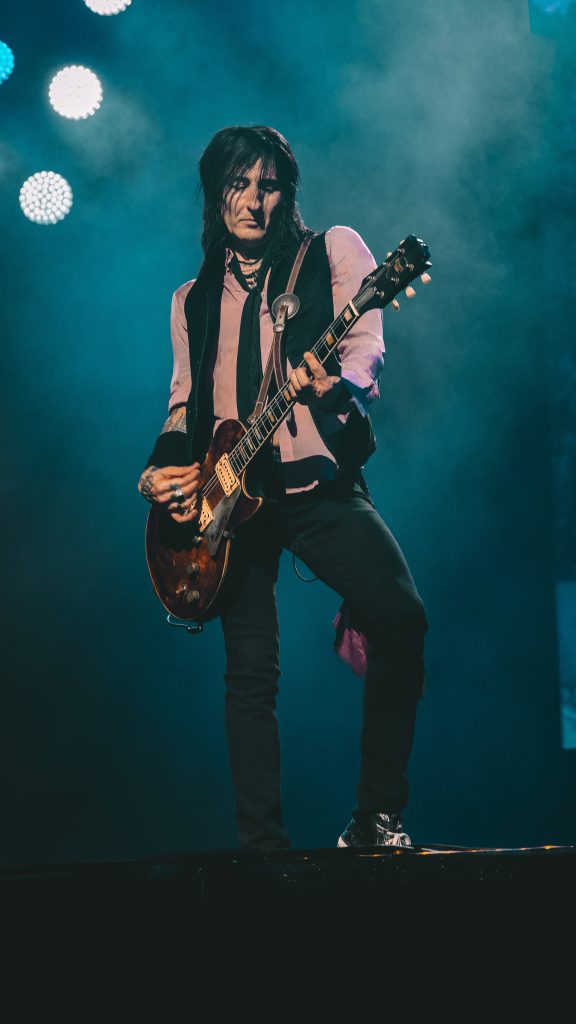
Earning a reputation as one of the best guitarists trotting the globe, Fortus also toured with Thin Lizzy in 2011 and joined The Dead Daisies between 2013 and 2016.
A true tone hound with a taste for both elegance and grit, Fortus has always been discerning about the gear he uses. Throughout the years, Roland and BOSS have remained a trusted part of his toolkit, both on stage and in the studio.
Which Roland or BOSS effects have you relied on in the past?
For years, my effects were primarily based around a Roland GP-8 Guitar Effects Processor from the late 1980s. It was an amazing analog/digital hybrid design with eight effects circuits packed into a rack unit. Some effects were analog, some were digital, but everything was digitally controlled, and you could store your favorite settings as presets.
I used the GP-8 from my first band, The Eyes (later called Pale Divine), throughout Love Spit Love and The Psychedelic Furs. I still use it whenever my first band does reunion shows. I have to pull that out because nothing else sounds like it. It was such an integral part of the band’s sound. My original one went missing, so I had to buy another one.
"For years, my effects were primarily based around a Roland GP-8 Guitar Effects Processor."
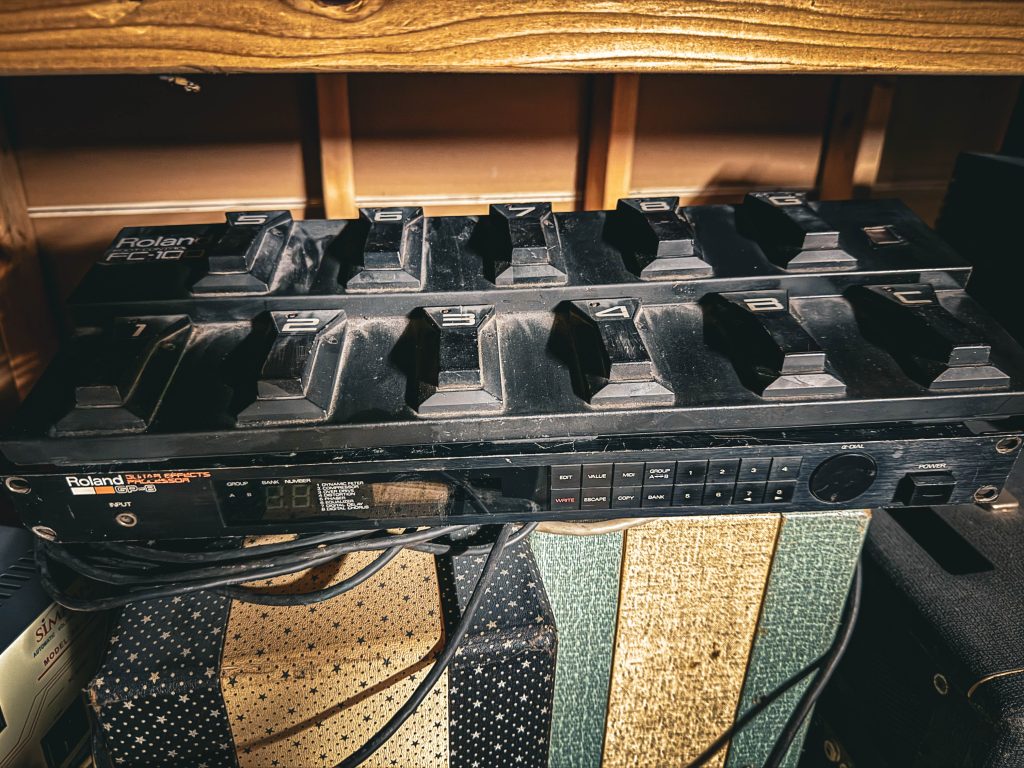
Wayne Hussey from The Mission is also a huge fan of the GP-8. He still uses it and sent me all his presets. Wayne’s been using a GP-8 since The Sisters of Mercy days.
The GP-8 is genius. There’s something special about those circuits. In order, you’ve got the Dynamic Filter (like the BOSS FT-2), Compressor, Turbo Overdrive (like the BOSS OD-2), Distortion, Phaser, Equalizer, Digital Delay, and Digital Chorus.
I never really vibed with the Distortion (even old original DS-1 compact pedals), but using the Turbo Overdrive with the Compressor does something for me. And I really liked the Phaser and Digital Chorus effects.
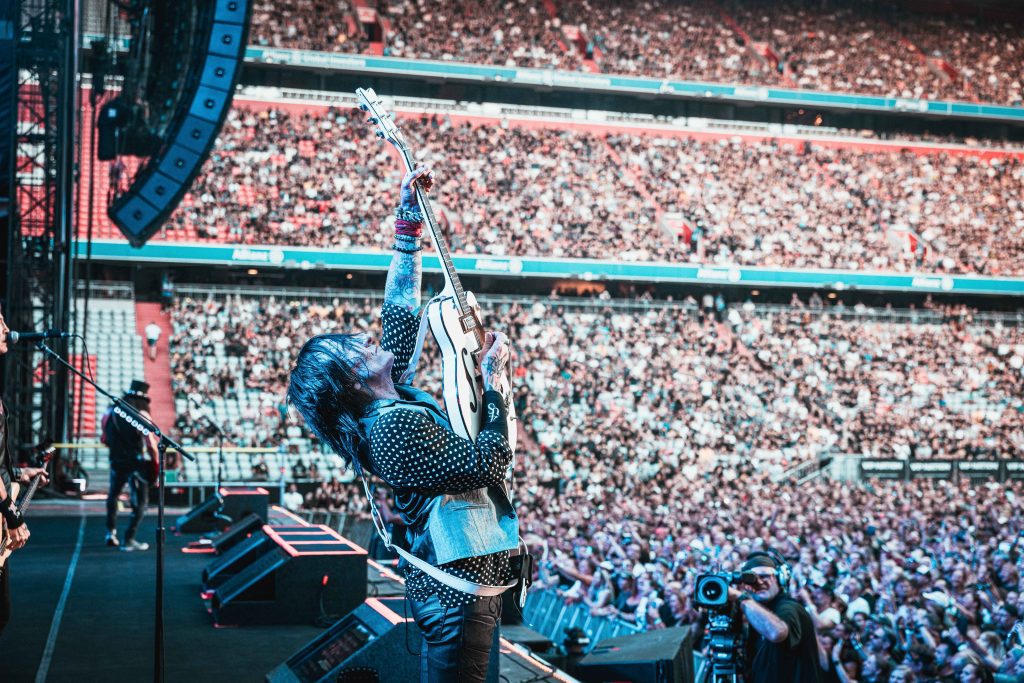
I’m surprised the GP-8s aren’t more valuable on the used market, because some of the pedals, like the FT-2 Dynamic Filter, are being sold for more on their own.
Did you use the Roland GP-8 in the studio?
I wish I’d used it more on Pale Divine’s first major label release, 1991’s Straight to Goodbye. I was looking for a different avenue because I’d been using the GP-8 for so long. I used it for certain sounds on the record, though, because there were some things that nothing else could do. For example, the Compressor, Digital Delay, and Digital Chorus were totally unique.
"I used the FZ-2 Hyper Fuzz on the Chinese Democracy record and had it in my live rig."
Which BOSS pedals have you used to record with Guns N’ Roses?
I used the FZ-2 Hyper Fuzz on the Chinese Democracy record and had it in my live rig for a while. That’s a really underrated pedal. I’d love to see BOSS do a reissue. I tended to use the FZ-2’s Fuzz II mode with the scooped sound. You can hear the FZ-2 in the song “Chinese Democracy.” That came from the Nine Inch Nails camp; Robin Finck was the one who turned us on to the FZ-2. I’ve still got three or four FZ-2s.
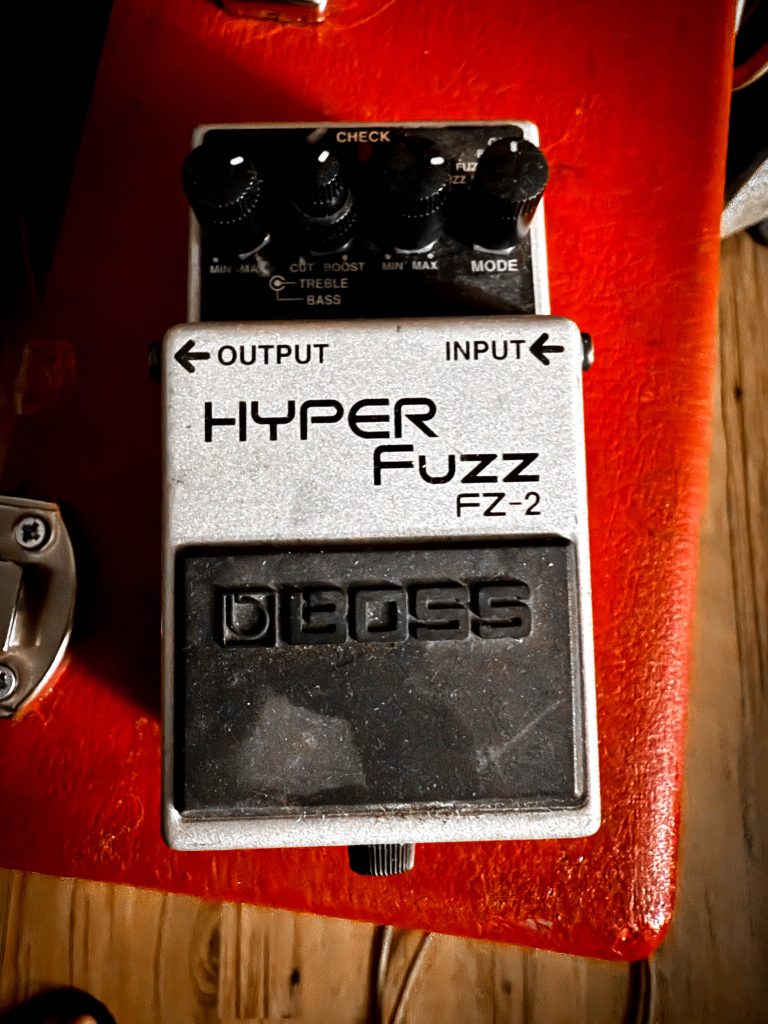
Talking of BOSS fuzz pedals, the Waza Craft Tone Bender TB-2W looks interesting, and I’ve heard great things about it. I’m a big Tone Bender MK II fan, and I’ve got a couple of old ones. Somebody is going to build me one with some original OC81D transistors, which I’m excited about.
What do you think of the BOSS RE-202 Space Echo pedal?
The RE-202 is fantastic. It’s really, really good. In fact, it makes me wonder why I have a vintage Roland RE-201 Space Echo hooked up in my studio! The engineers have done a really fine job with the BOSS RE-202. I mean, it sounds identical to the original RE-201. I love the spring reverb on both, too.
Does Slash still like to use the BOSS DD-3 live?
Yeah, he does. People love those. But the one from the mid-1980s era I love the most is the DM-3 Delay.
"The engineers have done a really fine job with the BOSS RE-202. I mean, it sounds identical to the original RE-201."
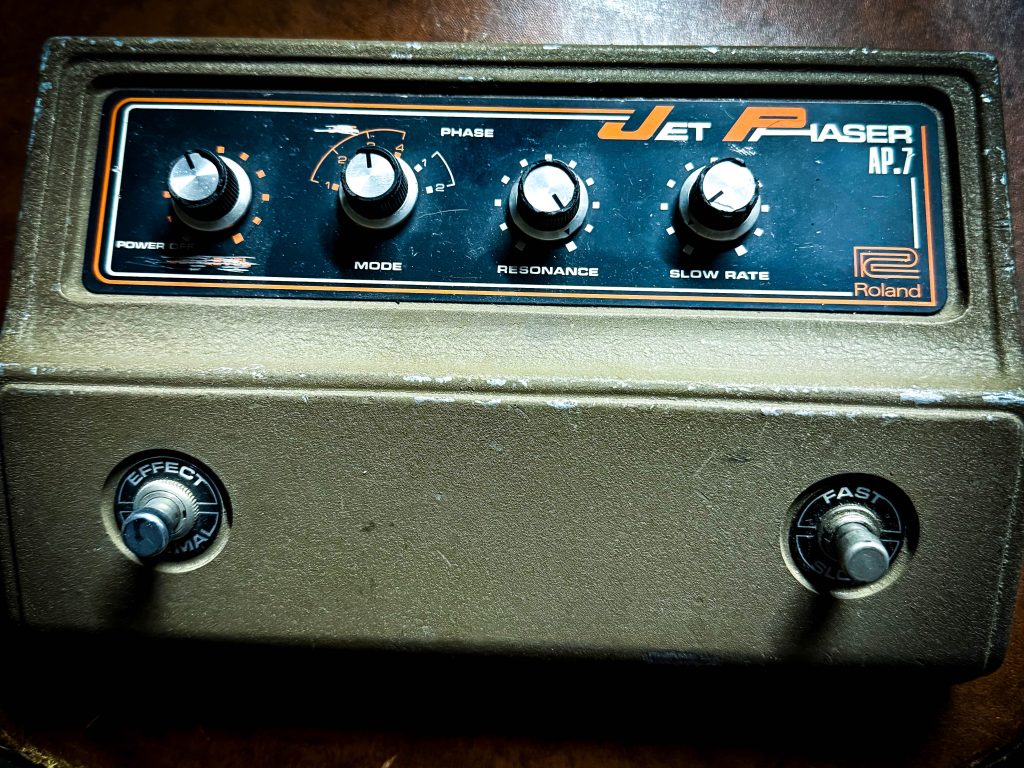
Do you have any other old BOSS or Roland favorites?
Along with the DM-3 Delay, I used to use an OD-1 Overdrive. With no tone control, the OD-1 either worked or didn’t work, depending on the guitar and amplifier. It was a little bit hit and miss, but when it worked, it was glorious. Those were regulars, and I used them quite a bit. And I still have my big-box BOSS BF-1 Flanger and Roland AP-7 Jet Phaser. Those are cool.
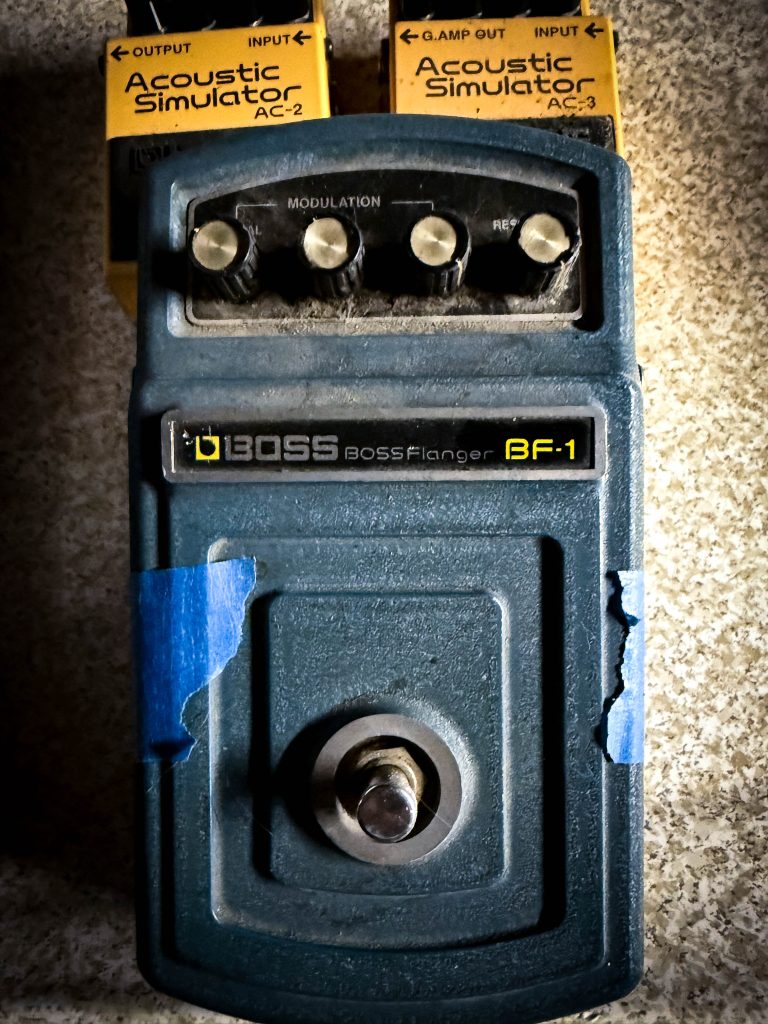
I’ve got a GM-800 Guitar Synthesizer, and I’ve also owned some classic Roland guitar synthesizers, like the GR-700 and a GR-300. Both Robert Fripp and Adrian Belew used the GR-300 a lot.
"I still have my big-box BOSS BF-1 Flanger and Roland AP-7 Jet Phaser. Those are cool."
Have you used Roland or BOSS amps?
Sure, I mean, back in the day, people used JC-120 Jazz Chorus amps for clean sounds all the time. It does that clean, compressed thing so well. Nothing else sounds like that. JC-120s are classic. I was such a huge King Crimson fan, and the JC-120 was a massive part of their tone on those three ‘80s records: Discipline, Beat, and Three of a Perfect Pair.
I saw the BEAT tour, and it was excellent. I think Steve Vai did an amazing job. Back in the early ‘80s, that King Crimson lineup—Robert Fripp, Adrian Belew, Tony Levin, and Bill Bruford—was so unique. All four were true individuals.
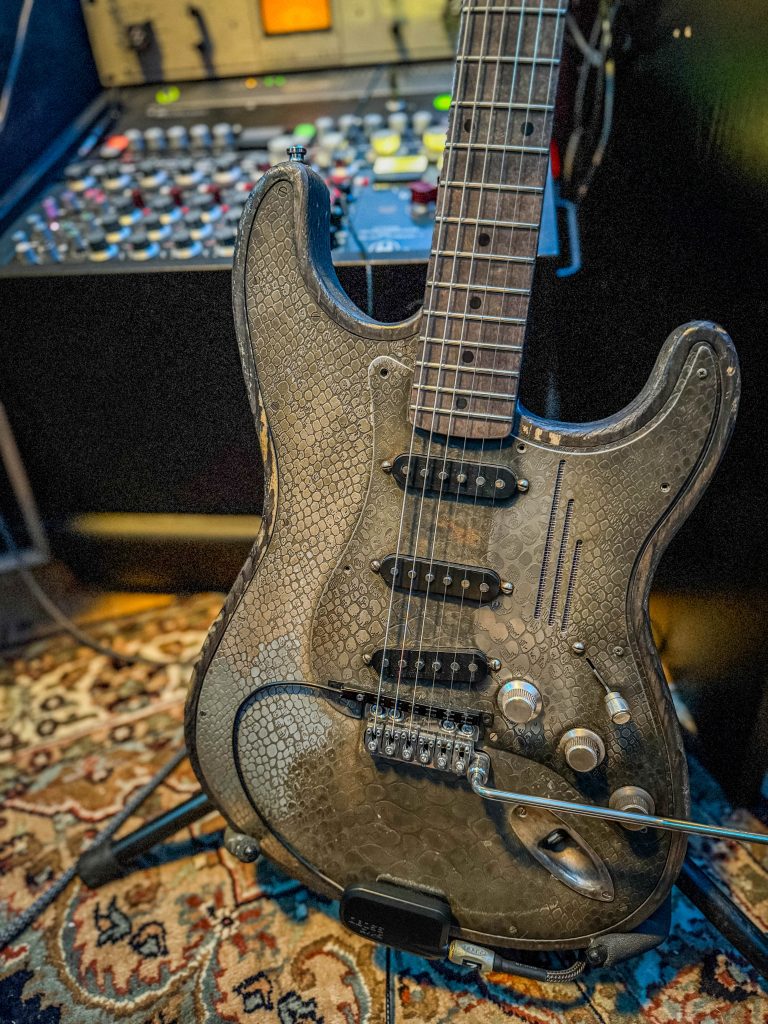
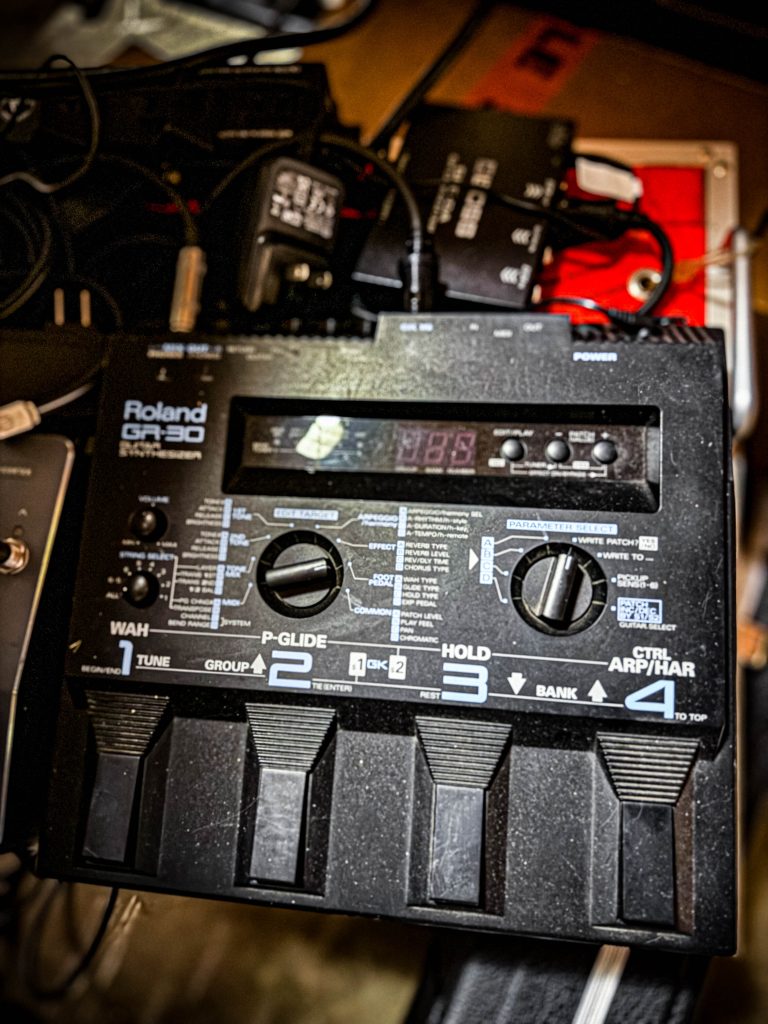
Steve Vai used the latest generation GK-5 Divided Pickup for the BEAT tour. What’s your experience using this technology live?
I like to use a GK-5 Divided Pickup along with a GKC-DA GK Converter box for my old GR-30 Guitar Synthesizer—mainly because I love the sax sounds on that unit. To my ears, the GR-30 sounds much more like the classic Roland D-50 synthesizer tones, which I love. It worked really well for The Psychedelic Furs’ live shows.
"I use the GK-5 Divided Pickup all the time in the studio as a MIDI controller to control software synthesizers in my DAW."
How easy was it to set up the GK-5 Divided Pickup?
It’s very easy, though you might have to tweak it slightly to get it perfect. I have the GK-5 mounted on a Trussart Strat-style guitar. It’s nice to have a slimline quarter-inch TRS connection on your instrument rather than the older, bulkier 13-pin connection.
The GK-5 is plugged into the GKC-DA GK Converter box with a Serial GK Cable, and then a 13-pin cable connects that to the GR-30. It’s pretty simple, but that’s how I do it live.
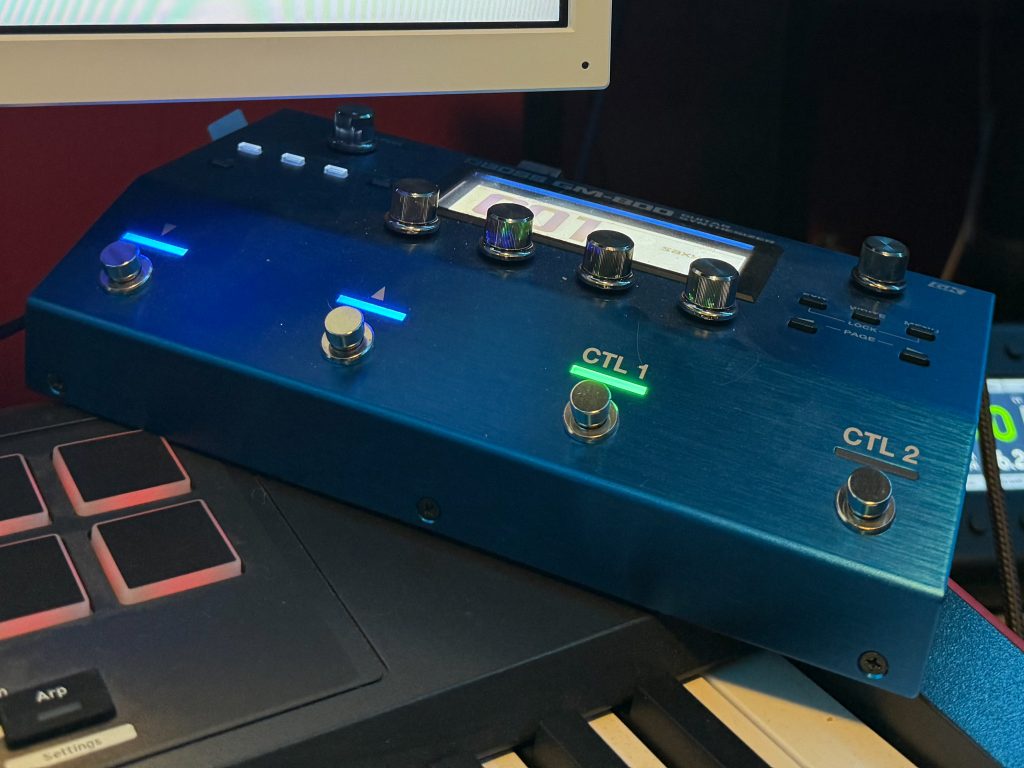
How do you have it set up in the studio?
I use the GK-5 Divided Pickup all the time in the studio as a MIDI controller to control software synthesizers in my DAW. It works really well. I just plug the GK-5 into the GM-800 Guitar Synthesizer and then hook the GM-800 up to my computer. I can use all of my orchestrating software with the GK-5 as a controller, and it works great.
I’ve also got controller pedals set up to control things like velocity, vibrato, and attack. I still have a keyboard controller hooked up, but I find that’s much more laborious than just picking up a guitar with a GK-5 Divided Pickup installed.
